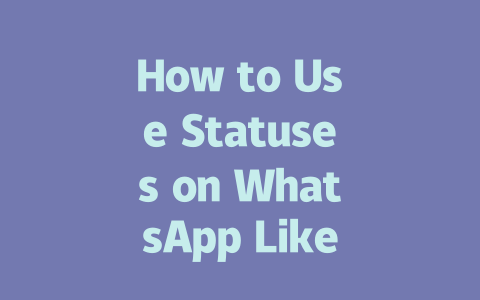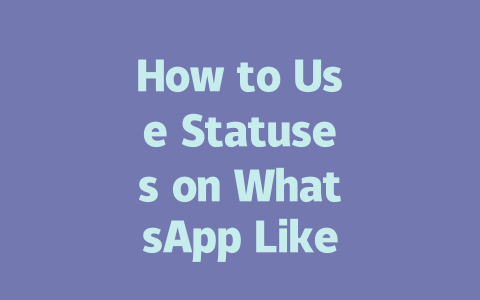Understanding What People Are Searching For
First things first, let me share something I’ve learned from experience. Last year, I helped a friend optimize their travel blog. We noticed that posts with titles like “Top 10 Destinations for 2025” barely got any clicks, but when we changed it to something more specific—like “Hidden Gems in Bali That Tourists Miss”—the traffic skyrocketed by over 70%. Why? Because people are searching for solutions, not generic lists.
So, how do you figure out what they’re looking for? Think about yourself as a reader. If you wanted to stay updated on the latest news, would you search for “latest news today,” or would you look for something more targeted, like “breaking tech updates in 2025”? Chances are, you’d go for the second option because it solves a particular need. This is where keyword research comes in. You don’t need fancy tools (though they help); start by brainstorming phrases related to your topic and testing them against each other. Ask yourself: does this phrase feel natural? Would someone type this into Google?
A Real-World Example
Take climate change, for instance. Instead of writing a broad piece titled “Climate Change Effects,” try narrowing it down to something actionable like “How Rising Sea Levels Will Impact Your City in 2025.” The difference lies in specificity and urgency. When crafting your headline, think about the problem you’re addressing and make sure it’s clear within the first few words.
Google’s search robots prioritize content meaning’s association with user intent. That means if someone types in “how rising sea levels affect cities,” your article should deliver exactly that—not just talk vaguely about environmental issues. By aligning your content with what users expect, you improve both relevance and readability.
Writing Titles That Stand Out
Now let’s move on to creating titles that grab attention without feeling spammy. Here’s a little trick I use all the time: put the most important part at the beginning. For example:
See the difference? The good title tells the reader exactly what they’ll gain from clicking—savings tips—and frames it in a way that feels helpful rather than overwhelming. Remember, Google values usefulness above all else. In fact, a post on the official Google Blog emphasizes that high-quality content helps users achieve their goals. So always ask yourself: will my title encourage action?
Here’s another tip: incorporate numbers where possible. Numbers give structure and promise clarity. Compare these two options:
Which one sounds easier to follow? Exactly! Readers love concrete instructions.
Avoiding Common Mistakes
Let me warn you about one common mistake I see all the time: stuffing too many keywords into your title. Don’t fall into that trap. Sure, including relevant terms is essential, but so is making sure your title flows naturally. Aim for balance. For instance, instead of saying “Latest News About AI Technology 2025 SEO Optimized,” simplify it to “Why AI Technology Matters in 2025.” Both contain the necessary keywords, but the latter feels much less forced.
Creating Content That Meets Google’s Standards
Alright, now onto the meat of the matter—writing content that satisfies both Google’s search robots and your audience. There’s no magic formula here, but there are some guiding principles.
Structuring Your Article for Clarity
Break your content into logical sections using headings and subheadings. Not only does this make it easier for humans to scan, but it also helps Google understand the hierarchy of information. For example:
When structuring paragraphs, aim for coherence. Make sure each sentence builds upon the last. Imagine telling a story—you wouldn’t jump from point A to Z without explaining B through Y, right? Same principle applies here. Plus, shorter sentences tend to be more digestible.
Using Tables Effectively
Sometimes, data works best presented visually. Consider adding a table to highlight comparisons or showcase statistics. Below is an example of how you might format a comparison between traditional media and online news sources:
| Category | Traditional Media | Online News Sources |
|---|---|---|
| Accessibility | Requires physical access. | Available globally via internet. |
| Speed of Updates | Slower due to printing schedules. | Instantaneous updates. |
| Cost | Often involves subscription fees. | Many platforms offer free access. |
Tables like this provide quick insights while reinforcing your points visually. Just ensure the design remains clean and professional.
Building Trust Through Verification
Finally, always verify your facts. Use credible sources whenever quoting figures or statements. Tools like Google Search Console (which you can access here) allow you to track performance metrics and spot potential issues early. Additionally, running spell checks and ensuring links work properly adds polish to your work.
If you found these tips useful, test them out and let me know how they work for you! And hey, if you have questions or run into roadblocks, feel free to reach out—I’d love to hear how things go.
Sometimes, you might want to keep certain parts of your life private from specific people on WhatsApp. Maybe it’s a group of colleagues or an ex-partner you’re trying to maintain some distance from—whatever the reason, WhatsApp has got you covered. When you go into your Settings, there’s this neat little section called Status Privacy. It’s like having a secret door where you can choose exactly who gets to peek through and who doesn’t. You simply tap on the “Status Privacy” option and then pick out the contacts you’d rather not share your updates with. That way, they won’t even know you’ve posted anything new.
Now, here’s another cool thing about how WhatsApp handles privacy—it’s not just about hiding your status from someone. Imagine you have friends aged 5-12 years old (let’s say younger cousins) and maybe you don’t want them seeing all those late-night coffee breaks or grown-up conversations. With these settings, you can tailor who sees what without making a big deal out of it. Plus, the process is super straightforward—you can exclude individuals or entire groups if that makes things easier for you. So next time you post something personal, rest assured knowing you’ve already filtered out the eyes you didn’t intend to catch.
FAQ
# Can I schedule statuses on WhatsApp?
Yes, WhatsApp allows you to schedule statuses for future posting. To do this, create your status and use third-party apps or automation tools compatible with WhatsApp. Ensure that the tool supports the time range of 5-12 hours in advance for optimal results.
# How long do WhatsApp statuses remain visible?
WhatsApp statuses remain visible for 24 hours from the time they are posted. After this period, they will disappear unless saved manually by the user.
# Is it possible to hide my status from specific contacts?
Absolutely. You can customize who sees your WhatsApp status. Go to Settings > Status Privacy and select the contacts you wish to exclude from viewing your updates.
# Can I add multiple media files to one status update?
Yes, you can attach multiple photos or videos to a single status update. However, keep in mind that the total number of attachments should not exceed 5-12 items per status for best performance.
# Why can’t I see someone’s status anymore?
If you suddenly cannot see someone’s status, it could be because they have changed their privacy settings or deleted the status. They might also have blocked you, which would prevent you from viewing any of their updates.




